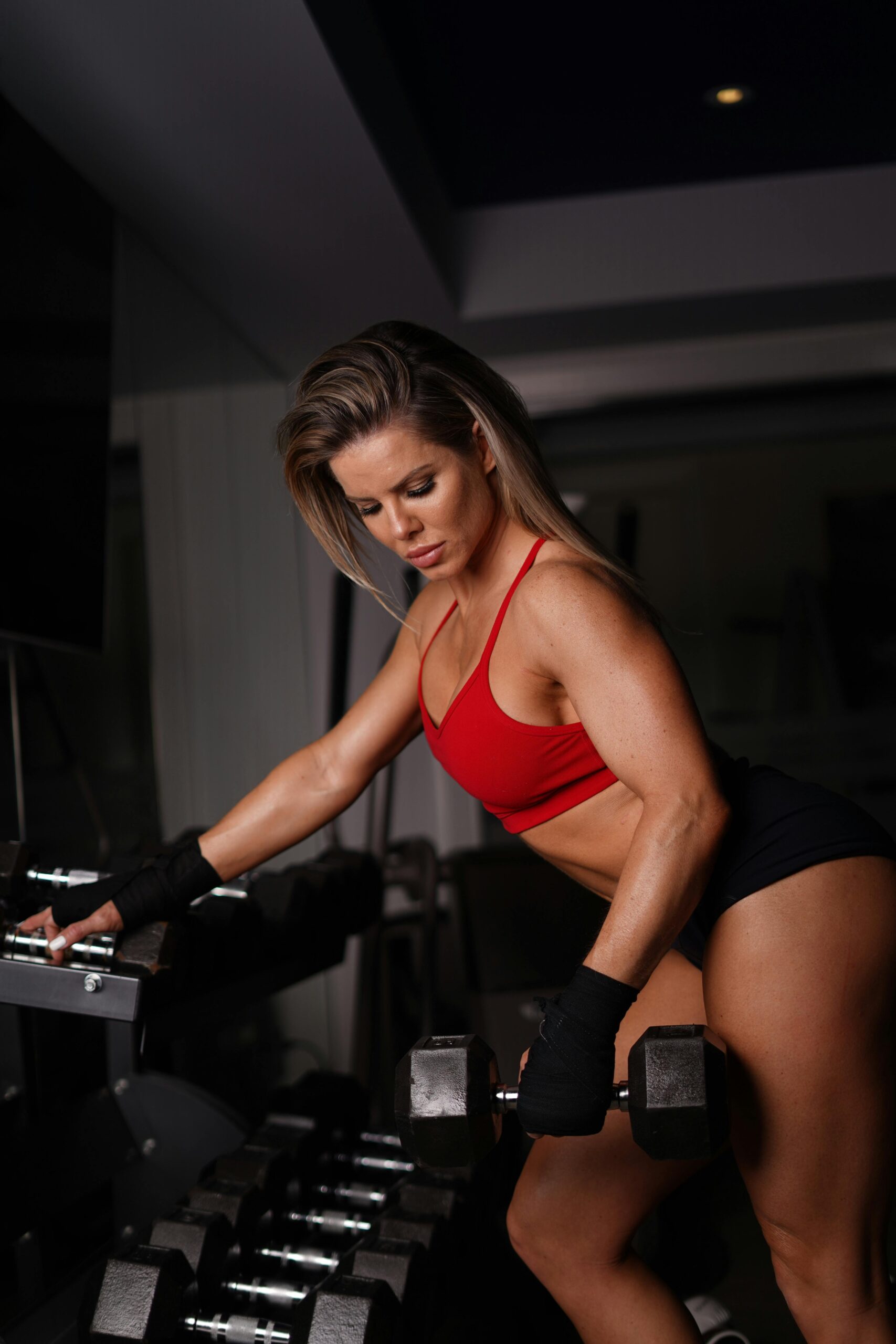Practical Guide to Effective Biceps Long Head Exercises for 2025 Results
Building strong and well-defined biceps is a common goal for fitness enthusiasts, especially for those looking to enhance the long head of the biceps muscle. Engaging in targeted Bizeps Übungen can lead to significant muscle growth and improved strength in the upper arms. The long head plays a crucial role in the overall appearance and function of the biceps, contributing to that coveted peak when flexed. This article will cover effective Bizeps langer Kopf exercises, training tips, and methods to optimize your biceps workout for maximum results.
We will delve into various types of biceps exercises, including Kurzhantel Bizeps and Langhantel Bizeps, along with instructional techniques to isolate the biceps effectively. You’ll also discover the importance of flexibility and proper nutrition in supporting your biceps development. Whether you prefer Heimtraining Bizeps or enjoy the environment of a fitness studio, you’ll find comprehensive guidance to enhance your bicep training routine.
Key takeaways include a practical workout plan for different skill levels, troubleshooting common mistakes during biceps training, and tips for maintaining motivation. Let’s get started on sculpting impressive biceps!
Effective Techniques for Biceps Long Head Growth
Building the long head of the biceps requires specialized movements that emphasize its recruitment during exercises. Focusing on the right Bizeps Training methods is crucial for effective Muskelaufbau Bizeps and achieving a balanced, aesthetically pleasing arm. Particularly, the long head develops width and fullness, making it essential for overall arm size.
Incorporating Dumbbell Curls
Dumbbell curls are fundamental in targeting the long head effectively. The slight twist of the wrist at the top of the curl maximizes engagement in this part of the biceps. To perform:
- Stand with a dumbbell in each hand, arms fully extended at your sides.
- As you curl the weights up, supinate your wrists (rotate so palms face your shoulders) to fully contract the long head.
- Control the descent to maintain tension in the biceps.
Common mistakes include using momentum or lifting weights that are too heavy, which diminishes the exercise’s effectiveness. Aim for 3-4 sets of 8-12 reps, ensuring slow, controlled movements for maximum hypertrophy.
Utilizing Barbell Curls for Heavy Lifting
Barbell curls are another effective method to strengthen the long head. They allow for heavier loads and increased muscle activation. Here’s how to perform:
- Grip a barbell at shoulder-width, standing tall with your feet hip-width apart.
- Curl the bar up to your shoulders, focusing on squeezing your biceps at the top.
- Return to the starting position slowly to promote muscle engagement throughout.
Gradually increase the weight to follow the principle of progressive Überlastung, which is crucial for continued muscle growth. Bracing your core during the lift helps maintain proper form.
Hammer Curls for Comprehensive Development
Hammer curls work not just on the long head but also on the overall arm musculature, enhancing size and strength. They can serve as an excellent addition to your routine:
- Stand with a dumbbell in each hand, palms facing one another.
- As you curl the weights up, keep your elbows close to your body.
- Pause at the top, then lower the weight slowly.
Incorporate hammer curls into your routine for improved grip strength and forearm development—a critical aspect for enhanced biceps strength.
Isolation Techniques for Maximum Bicep Engagement
To truly isolate the biceps during your workout, it’s essential to incorporate specific techniques that enable full engagement of the biceps muscles. This not only improves strength but also ensures muscle fibers are adequately stimulated, resulting in better gains.
Concentration Curls for Focused Tension
Concentration curls are one of the best isolation exercises for the biceps long head. By limiting movement in the shoulders and focusing solely on the elbow joint, this exercise enhances peak contraction:
- Sit on a bench, with your legs spread and a dumbbell in one hand.
- Rest your elbow on the inside of your thigh, allowing the weight to hang down.
- Curl the weight up towards your shoulder, squeezing at the top.
Maintaining this focused tension throughout the movement emphasizes the long head effectively, making it an ideal exercise for true bicep isolation.
Incline Dumbbell Curls for Extended Range of Motion
The incline dumbbell curl is another great option that places the biceps in a slightly stretched position, which may promote increased muscle growth:
- Set an adjustable bench to an incline and sit back with a dumbbell in each hand.
- Allow your arms to hang straight down before curling them towards your shoulders.
- Control the weight back down while keeping tension on the biceps.
This exercise can also help prevent injuries by focusing on gradual movement patterns.

Maintaining Proper Form and Avoiding Common Pitfalls
Proper technique is vital not only for effectiveness but also for preventing injury. A few common pitfalls include:
- Using excessive weight, which can lead to poor form and unnecessary strain.
- Neglecting the full range of motion, which limits muscular engagement.
- Failing to engage the core, which may compromise your stability during lifts.
Ensuring a comprehensive warm-up to prepare the biceps for heavy lifting is crucial. This can involve light stretching and mobility exercises to enhance flexibility and blood flow.
Best Practices for Biceps Training and Recovery
Training does not stop after the last set; recovery plays a crucial role in muscle development. Understanding Erholung nach Bizeps Training is essential for continued growth and strength.
Incorporating Flexibility and Stretching
Flexibility is often overlooked but plays an integral part in fitness. Incorporating Flexibilitätsübungen Bizeps alongside your strength training can significantly benefit your overall performance:
- Static stretching post-workout aids recovery and muscle relaxation.
- Dynamic stretching pre-workout prepares muscles for movements, improving range of motion.
A focus on flexibility can help reduce the risk of injury and improve overall muscle function, promoting greater gains in your workouts.
Optimizing Nutrition for Muscle Growth
Nutrition is a fundamental building block in the journey of building stronger biceps. Adequate protein intake is necessary for muscle repair and growth:
- Incorporate high-quality protein sources such as lean meats, dairy, legumes, and protein supplements.
- Stay hydrated, as water aids muscle recovery and performance during workouts.
Prioritizing meal timing, such as post-workout nutrition, helps replenish glycogen stores and kickstart muscle recovery.
Tracking Progress for Enhanced Results
To ensure continued progression in your biceps training, maintaining a Trainingsjournal führen can be incredibly beneficial:
- Record workouts, sets, and reps to track improvements over time.
- Note how you feel after workouts for insights into what works best for you.
Systematically tracking your training provides visual feedback, motivating you to stay consistent and challenging yourself as needed.

Common Questions about Biceps Long Head Exercises
What are the best exercises for the long head of the biceps?
Some of the most effective exercises include dumbbell curls, barbell curls, and hammer curls. These movements specifically target the biceps long head and promote overall arm strength.
How often should I train my biceps for optimal growth?
It’s recommended to train biceps 1-2 times per week, allowing for sufficient recovery time between sessions to maximize muscle growth.
Are there any specific stretches to enhance biceps flexibility?
Stretching your biceps with static and dynamic movements significantly aids flexibility. Simple stretches like the wall bicep stretch can provide significant benefits.
What role does nutrition play in bicep training success?
Nutrition is critical for supporting recovery and growth. High-quality protein and post-workout nutrition are essential for enhancing muscle development.
How can I prevent injuries during biceps training?
Maintaining proper form, using appropriate weights, and ensuring a thorough warm-up can help prevent injuries. Listening to your body and taking rest days when necessary is equally important.
With these targeted strategies and practices, you can effectively develop your biceps’ long head while minimizing the risk of injuries. Stay dedicated, and watch your arm strength and definition grow!
